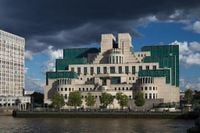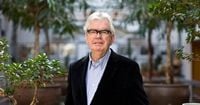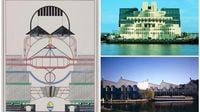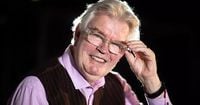Sir Terry Farrell, the celebrated British architect whose playful, colorful, and historically rich buildings reshaped the landscape of postwar Britain, has died in 2025. Best known for designing the iconic MI6 headquarters in London, Farrell leaves behind a legacy that challenged the solemnity and orthodoxy of his profession, injecting a sense of humor and humanity into the built environment.
Farrell’s passing, reported on September 30, 2025, marks the end of an era for British architecture. According to UK/Europe news coverage, he was the creative force behind many well-known buildings, most notably the MI6 headquarters on the Thames. Yet his influence ran far deeper than a single landmark. As Piers Taylor, founder of Invisible Studio, wrote, "Terry Farrell was always a troublemaker in British architecture – a necessary one." In a field often dominated by what Taylor called "solemnity, orthodoxies and the heavy weight of modernist pieties," Farrell stood out for gleefully refusing to play along.
His buildings, such as the TV-am Television Studios in Camden Lock (completed in 1983) and Alban Gate on London Wall, were once derided by the establishment as too gaudy, too populist, and too irreverent. But as Taylor noted, "Farrell’s very refusal of solemnity was his greatest radical act." Rather than adhering to the "tired script of ‘truth to materials’ and internationalist abstraction," Farrell drew inspiration from history, commerce, and everyday culture, reassembling them into exuberant, pluralistic compositions. He broke the mold by admitting the vernacular of billboards, railway stations, and seaside piers into the architectural canon, reminding the profession that cities are sites of pleasure and spectacle as much as order and discipline.
Now, decades after his most controversial works, there has been a broad reappraisal of Farrell’s career. What once seemed garish or opportunistic now appears prescient—a resistance to architectural austerity and a celebration of difference and delight. "His boldness unsettled a discipline terrified of humour; his irreverence disrupted the easy consensus that architecture must always speak in hushed tones," Taylor wrote. To call Farrell merely ‘postmodern’ is to miss the point, he added: "He was a provocateur in the best sense: he showed us that architectural meaning is never fixed, never sacrosanct. He unsettled authority not by manifestos, but by buildings that grinned back at the profession."
Farrell’s legacy, then, is as much about attitude as it is about style. He championed the idea that architecture could—and should—be mischievous, unruly, and alive to the messiness of city life. His work was not just about making statements, but about inviting the public into a conversation about what buildings and cities could be.
Tracy Meller, senior director at RSHP and a former employee, recalled her time working for Farrell with fondness. "Outspoken, refreshingly straightforward and blessed with a mischievous sense of humour, he lived up to his reputation as a ‘maverick’ – as the infamous breakfast eggs at TV-am Studio can attest," she wrote. Farrell believed deeply in the power of communities and neighborhoods to shape design, long before this became a mainstream idea. Meller praised his conviction that architecture could improve lives and places, both at the scale of individual buildings and entire cities.
In 2023, Farrell’s vision for public engagement with architecture found concrete form with the opening of the Farrell Centre in Newcastle, his childhood home. The Centre, a result of the Farrell Review a decade earlier, was conceived as an "urban room"—a space where citizens could learn about their city’s past and debate its future. Meller described it as a much-needed forum for British cities, and a fitting legacy for Farrell’s career.
Farrell’s influence extended well beyond his own projects. He was known for his support of younger architects, offering advice and encouragement even after they had moved on from his practice. Meller recounted, "He always took time to ask questions and offer advice – even long after I had left the practice. He leaves behind a thriving practice and a powerful legacy, not least in the continued passion for better cities carried forward by his son Max Farrell and colleagues at the LDN Collective."
Hugh Broughton of Hugh Broughton Architects echoed these sentiments, recalling two memorable encounters with Farrell—one, a chance meeting on a flight, and another during a masterplanning workshop at the 2008 Shanghai Expo. "Terry showed no hint of distance or superiority, instead he was genuinely curious about my work," Broughton said. Even when their attempted collaboration didn’t materialize, what stayed with Broughton was Farrell’s "attentiveness, generosity and openness to new thinking." He added, "What often seems to distinguish the most celebrated figures in architecture is their ability to set aside competitiveness and approach work with infinite curiosity and a joy in the collective, collaborative process. Terry embodied that spirit."
Farrell’s career spanned a remarkable range, from the little-known Blackwall Tunnel ventilation shafts—designed during his time at the London County Council Architects’ Department and now Grade II listed—to the High-Tech 125 Park Road apartments (a product of his early partnership with Nicholas Grimshaw), to heritage-led regeneration projects like the Comyn Ching Triangle in Covent Garden. Many of these works are now protected as listed buildings, thanks in part to efforts like the 2016 Postmodern conference, which helped raise awareness of the value of postmodern architecture.
Yet, as some commentators have noted, much of Farrell’s larger work remains unprotected. His "grand projets"—Alban Gate, the SIS MI6 Headquarters, and the Embankment Place office complex above Charing Cross Station—are monuments to London’s "Big Bang" era, but remain vulnerable to redevelopment. Their fate now hangs in the balance, even as the architectural world pays tribute to their creator.
Farrell’s death comes just two weeks after the passing of Nicholas Grimshaw, his early collaborator, and follows the deaths of other giants of British architecture such as Richard Rogers (2021) and Michael Hopkins (2023). For many, it feels like the closing of a remarkable chapter in the story of British design. As one observer put it, "It is the real end of an era, especially with Richard Rogers and Michael Hopkins passing so quickly."
More than his buildings, it is perhaps Farrell’s belief in community, pluralism, and the joy of architecture that will endure. The Farrell Centre in Newcastle stands as a testament to his vision of cities as places for everyone—a fitting memorial to a man who, in the words of his peers, was always willing to grin back at the establishment and ask: why not make architecture a little more fun?







